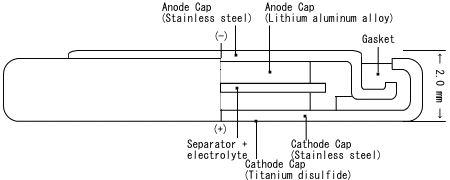NAS 64; High Strength and High Corrosion Resistant Duplex Stainless Steel
Characteristics of NAS 64
An austenitic-ferritic duplex stainless steel, NAS 64 (SUS 329J4L, UNS S32506, ASME Code Case 2543) was developed by Nippon Yakin Kogyo to provide superior resistance to corrosive substances. NAS 64 is particularly resistant to phosphoric acid, acetic acid and various types of sulfur compounds. Owing to its exceptionally low carbon and high molybdenum composition, it provides a level of local corrosion resistance markedly improved over SUS 329J1.
Chemical Composition
(%)
| C | Si | Mn | Ni | Cr | Mo | N | Others |
| 0.012 | 0.56 | 0.70 | 6.30 | 25.00 | 3.30 | 0.10 | W:0.14 |
Physical Properties
| Density g/cm3 | 7.80 |
| Specific heat J/(kg・k) 25℃ | 460 |
| Specific resistivity μΩ-cm | 88.7 |
| Thermal conductivity W/(m・k) 25℃ | 12.6 |
| Coefficient of thermal expansion 10-6/℃ 30~200℃ 30~300℃ 30~400℃ |
10.46 11.39 12.24 |
| Young's modulus N/mm2 | 19.6x104 |
| Ferromagnetism | Yes | Melting point ℃ | 1420~1462 |
Mechanical properties
| Example | Thickness (mm) |
0.2% Proof stress (N/mm2) |
Tensile strength (N/mm2) |
Elongation (%) |
Hardness (HV) |
Bendability 180° |
| Cold rolled sheet | 1.6 |
732 | 853 | 23 | 258 | r=0.5t No crack |
Heat treatment
Heat treatment does not harden NAS 64. Rapid cooling is required after heating the solution heat treatment between 1050 and 1080℃. The cooling should be carried out as rapidly as possible to prevent 475℃ embrittlement and sigma-phase embrittlement.
Workability
Between 950 and 1150℃, the hot working strength is comparable to SUS 430. This strength rapidly increases below 900℃, so care is required. After hot working, solution heat treatment is needed. Care should also be taken when cold working as NAS 64 has higher yield strength and a lower elongation than SUS 304.
Weldability
Such welding techniques as TIG, MIG and shield metal arc welding can be used for NAS 64 as with standard austenitic stainless steels. Type 329J4L welding consumables should be used, though pre-heating and post-heating are not required.
Pickling
A mixture of nitric and hydrofluoric acids is used for pickling. To the extent that NAS 64 is more resistant to corrosion than SUS 304, descaling is more difficult. Alkaline immersion for a short time before pickling and shot blasting if possible are effective at descaling.
Characteristics
NAS 64 boasts a pitting resistance more than twice that of SUS 329J1, and its crevice corrosion resistance is far superior as well.
NAS 64 has excellent local corrosion resistance, including resistance against pitting corrosion and stress corrosion cracking, and can be used in environments that type 316 cannot withstand.
NAS 64 has higher strength than type 316, and can be used as mechanical structures.
Application
NAS 64 is suitable for use in a wide range of chemical equipment used in environments that type 316 cannot withstand. Applications are anti-pollution equipment, petrochemical plant, textile apparatus, paper and pulp industry, and seawater equipment. Due to its high strength, NAS 64 can also be used in harsh environments requiring both mechanical strength and corrosion resistance such as geothermal power generation plants.
Button battery cathode canister


